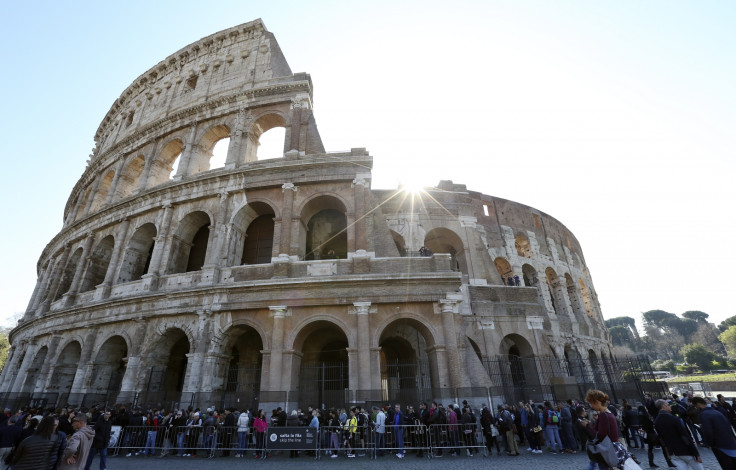Rome's Colosseum an arena of concern after earthquake increases cracks to landmark
The ancient amphitheatre has suffered damage from earthquakes over the centuries.
The latest earthquake to hit Italy is threatening to put more strain on the country's iconic historic landmark. Special superintendent for the Colosseum and the Roman Forum, Francesco Prosperetti, feared that damage could be caused to the largest amphitheatre ever built.
Prosperetti said a thorough inspection had been conducted at the Colosseum immediately after the earthquake on Sunday 30 October. He revealed that some material had tumbled from the top level of the 2,000-year-old structure, but that damage was caused long before the earthquake.
"With the earthquake the cracks are increasing," Prosperetti said in a Telegraph report.
"Cicero and Tacitus (Roman writers) also wrote that the tremors made swords and shields vibrate. But the most feared quakes were those that came from the Castelli region (outside Rome)."
After thorough checks, the Colosseum, the Roman Forum, the Baths of Caracalla and the Pantheon were deemed safe and opened to the public on Sunday (30 October).
In classical times, the Romans were conscious of the threat of earthquakes and made adjustments to withold the damage they could cause to buildings.
Archaeologist Alessandro D'Alessio said: "The (Colosseum) arches are the best structures to absorb movements and vibrations.
"The ancient Romans knew the earthquakes of the Apennines well."
In the past, the Colosseum was shaken by earthquakes many times over the centuries and sustained substantial damage in 1349 earthquake which brought down parts of the amphitheatre on the south side.
Damage appeared on other monuments in Rome. Cracks appeared on the fourth-century church known as "St Paul's Outside the Walls". Historic buildings at the Vatican were checked and declared safe for tourists.
Experts do not believe that Italy's earthquakes are getting stronger or more dangerous in recent years.
"There is no evidence at this time to show we are in a situation any different to the past few years. There are no signs of any type." said seismologist Antonio Piersanti, of Italy's National Institute of Geophysics and Volcanology,

© Copyright IBTimes 2025. All rights reserved.




















